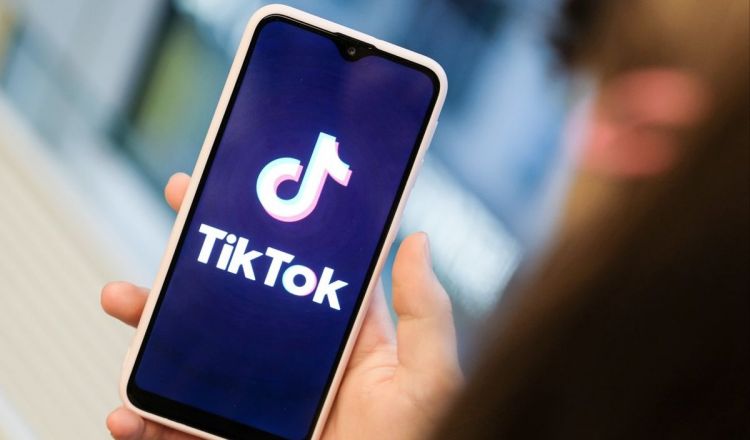Why do news publishers struggle to embrace TikTok?
2022-02-14 09:43

Why do news publishers struggle to embrace TikTok? (Journalism.co.uk)
Although media outlets are trying to attract younger audiences, very few venture onto the short video platform with more than 1 billion users worldwide, nearly half of whom are under 24
Last year, BBC News topped 20m followers on Instagram - the first news publisher in the world to do so - but does not yet have a TikTok account.
This is surprising for one of the world’s most popular news sites that has nearly half a billion users but it is not alone - some of the biggest names in news are languishing on the short video platform.
TikTok, on the other hand, amassed a billion monthly users in just four years, twice the speed of Facebook and Instagram which both took almost a decade to get over the one billion user mark.
These booming numbers are compelling to editors, directors and owners of news outlets that are competing to reach younger audiences. The problem is that legacy media brands and their news package content do not cut it on TikTok which is strongly personality-driven.
For instance, CNN, the second-largest English-language news account on Instagram (16.4 million) has just 38k followers on TikTok. Meanwhile, CNN’s anchor Max Foster has a TikTok following of more than 480k, 12 times that of the news site he works for.
[Read more: How to use TikTok and Instagram to reach younger news audiences]
Social media consultant and industry expert, Matt Navarra says that the difference between the platforms is central to understanding the variation in audience figures.
"The content of the ones that are doing well tends to be far closer and more similar to the native content. The sort of content you could look at and say ‘that looks and sounds like a TikTok video’. [Successful creators] have really tried to ingrain themselves in the community of TikTok.”
TikTok has a much less defined, more relatable look, explains Navarra, making it feel far more "laid back and informal".
Compared with Foster’s content, CNN’s own account looks more like traditional news. Sometimes content is duplicated on both its Instagram and TikTok accounts, specifically content from Facebook’s and Instagram’s ‘Story’ feature.
The result is that the polished editing and slick graphics can look jarring, adds Navarra, taking users out of the inertial scroll that defines the platform.
Other traditional outlets are trying to replicate Foster’s success by aping his style on branded channels, with mixed results.
Sky News, with around 75k followers, frequently asks its reporters to give the story behind the story, with candid to-camera pieces from journalists such as Beth Rigby and Sam Coates. According to Navarra, this allows TikTok users to form closer relationships with those creating the news. The result is a growing following that engages with Sky News content in the way the platform demands, and a younger audience that might have been lost to Sky News’ more traditional outputs.
The Daily Mail is a rare publisher that seems to be doing better on TikTok than on Instagram, attracting 3.5m followers on the former and 1.4m on the latter. Although the presenter-led videos are used on both platforms, the content featured exclusively on TikTok feels much more native to the platform, which is likely the driver of its success.
Kassy Cho, editor-in-chief and founder of Instagram and TikTok media outlet Almost, said that a lack of experimentation may be holding news publishers back on TikTok.
"Publishers may be seeing TikTok as hosting purely entertainment content and thinking that young people don’t necessarily want news," Cho explained.
"But in the last few years, we’ve seen that young people are really, really passionate about the world. People thought that news topics like politics, social justice and human rights were too complicated for young people, but this is the stuff they were craving."
Cho saw a similar trend unfurl on Instagram a few years ago. When she worked at BuzzFeed News, she single-handedly made its @world Instagram the fastest-growing news account on the platform in 2018. She achieved that growth through social videos covering news stories, from earthquakes to elections, at a time when most media outlets regarded Instagram with scepticism.
[Read more: Seven tips for publishers to get started with TikTok]
But news publishers cannot afford to underestimate this new opportunity to reach younger audiences in a space where they already are. Of TikTok’s billion users, 41 per cent are aged between 16 and 24, according to data from GWI, many of whom turn to TikTok for both information and entertainment from sources beyond established media.
The algorithm that drives TikTok means users can encounter different perspectives and content beyond those they follow, explained Cho.
Despite limited early success, TikTok could prove to turn to news in a similar way to Instagram where outlets have been focusing their attention. If journalists are allowed to experiment.
Overlooking trends and gaining an understanding of the format is key, added Cho. By spending time on the platform, journalists can understand the construction of a successful piece.
TikTok offers journalists the chance for blue-tick verification, quick editing tools and an algorithm where strong content will find an audience beyond an outlet’s core following.
"It’s being able to talk to an audience in a way that doesn’t feel patronising or condescending," Cho said. "It's journalism that feels like a friend telling you a shocking or surprising story that they discovered about the world."









